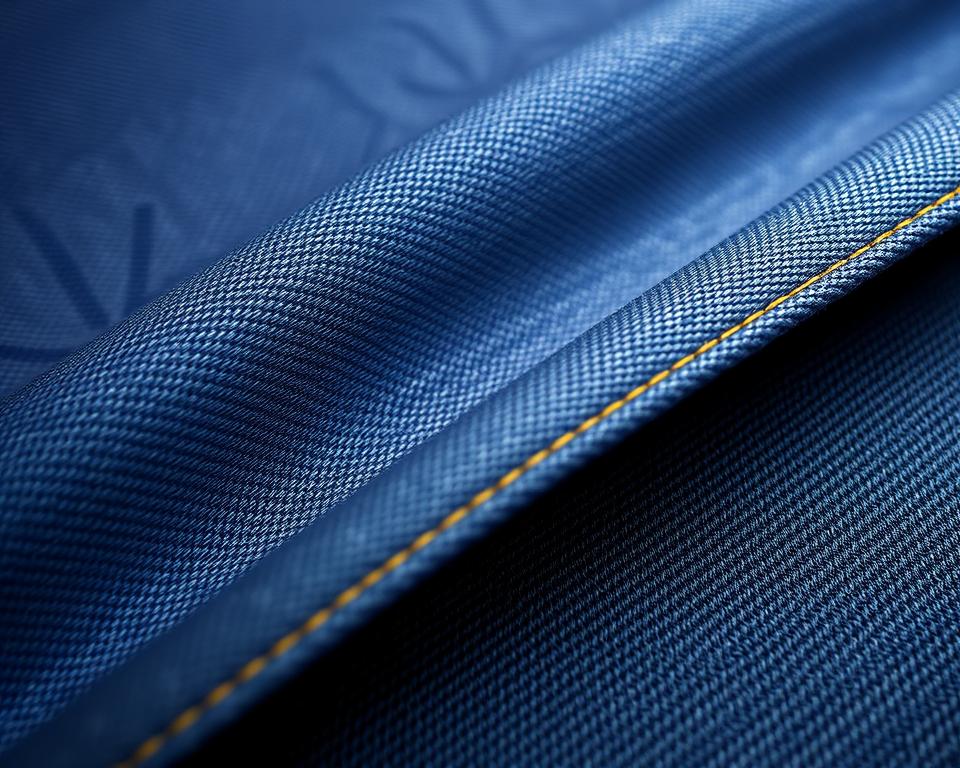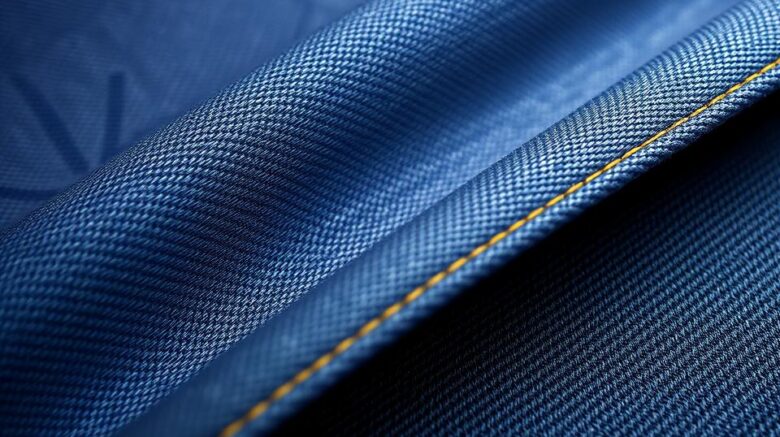A Comprehensive Manual to Superior denim Selvedge Textile
Have you ever wondered why certain pants seem like they’re designed for longevity the ages? The secret lies in the materials and skill. For example, the increasing popularity of superior selvedge. It’s not merely ordinary material—it exemplifies superiority and heritage.
Nowadays, a growing number of people are choosing these classic materials for their robustness and traditional ewingfly denim charm. Whether you’re a DIY sewist or a denim aficionado, there’s an exceptional aspect about working with top-grade natural fiber and yarn. It’s not just about constructing pants; it centers on fashioning something that tells a story.
Here at Core Fabrics, we’ve assembled a selection of 14.25oz organic cotton and stretch options. Such textiles are perfect for all from raw jeans to high-fashion jacket designs. Ready to explore the realm of exceptional fabrics? Let’s jump right in.
What Is Denim Selvedge Fabric?
What is it that makes certain jeans set themselves apart with their signature, self-finished seams? The secret is found in the selvedge denim, a premium material known for its robustness and old-school appeal. Unlike conventional textiles, this type of fabric is fashioned using traditional methods that have endured through ages.
Understanding Selvedge Denim
Selvedge denim is manufactured with vintage shuttle looms, which yield narrow widths of about 30-35 inches. These looms weave the material in a way that creates self-finished edges, often highlighted by a characteristic red line. This method confirms the material is densely interlaced and extremely robust.
Contemporary looms, on the other hand, generate expansive fabric but fall short of the same level of artistry. The imperfections in selvedge, like misaligned seams or uneven textures, are embraced as features of its character. This philosophy, known as “the beauty of imperfection”, exalts the beauty of natural flaws.
How Selvedge Denim Is Made
The manufacturing of selvedge denim entails a meticulous process. Traditional shuttle looms weave the weft thread in alternating directions, resulting in a compact and resilient material. This method contrasts with contemporary machines, which focus on speed and efficiency over craftsmanship.
Labels such as Karson Denim preserve vintage Japanese weaving techniques from the 90s. They purposefully add anomalies to retain the genuineness of the textile. All products is graded on a four-point system, confirming it fulfills the highest standards of quality.
| Feature | Selvedge Denim | Modern Denim |
|---|---|---|
| Width | 30-35 inches | 60+ inches |
| Fabrication Method | Traditional Shuttle | New-Age Loom |
| Texture | Irregular, Flawed | Consistent |
| Durability | High | Average |
“The beauty of selvedge resides in its natural irregularities—every imperfection narrates a tale artistry and heritage.”
The Background of Selvedge Denim
From humble beginnings to global acclaim, the story of these materials is rich and moving. Initially designed as hardwearing clothing in the 17th-century France transformed into a symbol of classic elegance and artistry.
Beginnings in Craftsmanship
The foundation of this fabric dates back to Nîmes, France, where it was known as “serge de Nîmes.” Initially created for laborers, it was constructed with robust cotton and stitching. Its strength made it a favorite among the workforce during the Gold Rush.
By the 20th century, it had transformed into a staple for trousers. The closure of the Cone Mills White Oak facility marked a turning point. This shift paved the way for Japanese artisans to restore classic fabric-making practices.

Evolution in Modern Denim Production
Following WWII, Japan adopted vintage American culture. Craftsmen repaired old looms to create true reproductions. This dedication to quality guaranteed the perseverance of selvedge as a specialty product.
Today, breakthroughs from Italy and Turkey have introduced sustainable combinations and stretch options. These advancements have enhanced the attraction of this classic material. At Core Fabrics, we procure internationally, from Montréal to Asia, to offer you the top-notch quality.
“Selvedge’s story is a testament to the lasting worth of quality and tradition.”
The Benefits of Selvedge Denim?
Why does selvedge denim distinguish itself in the world of top-tier fabrics? Its distinct attributes and incomparable robustness render it popular among enthusiasts and creatives alike. Whether you’re sewing jeans or a sharp jacket, this textile offers a fusion of classic methods and contemporary charm.
Characteristic Features of Selvedge
Selvedge denim is celebrated for its tight weave, which enhances durability and color fading characteristics. Differing from regular textiles, selvedge denim material is produced using classic shuttle looms, resulting in a denser and extra robust material. In doing so, it secures that all products boast a unique texture and character.
Here’s what makes it special:
- Hairy, rigid raw denim offers a contrast to pre-washed comfort stretches.
- Sanforization stabilizes the fabric for consistent measurements, while untreated fabrics provide a unique shrinkage journey.
- Weight options range from 9.5oz Eco Finish to 14.25oz Organic, meeting diverse applications.
Durability and Longevity
One of the key attributes of selvedge denim is its enduring nature. The firm interlacing not only increases durability but also allows for distinctive color fades over time. This makes it a treasured choice for those in pursuit of classic garments.
Important aspects:
- Mid-weight fabrics from 12oz to 14oz work well for tailored jackets and evolving jeans.
- The 14.25oz True Indigo option is highly favored for enduring jeans.
- Green alternatives, including recycled cotton with indigo blends, contribute to a sustainable collection.
At Core Fabrics, our collection includes a variety of options to suit your needs. From raw to sanforized, each piece is crafted to deliver exceptional quality and value.
Selvedge vs. Wide Denim: A Comparison
When it comes to crafting robust and fashionable apparel, the choice of fabric plays a crucial role. Two popular options are selvedge and wide denim, each with unique characteristics. Knowing how they differ assists in selecting the right one for your project.
Contrasting Weave Techniques
Selvedge denim is produced using traditional shuttle looms, producing limited spans of 30-35 inches. This herringbone denim material method generates firm borders, often accented with a distinctive red line. Conversely, wide denim employs advanced projectile looms, producing spans of 60+ inches.
Shuttle looms are slower, producing about 3 meters per minute, while modern projectile looms reach speeds of 30 meters per minute. The variance in production speed affects both the expense and the texture of the final product.
Advantages and Disadvantages
Selvedge denim is known for its premium quality and durability. Its slender dimension suits it well for creations where visible hems or patches are desired. However, it can be pricier, generally priced at $23 per meter.
Wide denim is more cost-effective, priced around $8 per half-meter. Its broader span minimizes excess, well-suited to large projects like furniture covering. However, it falls short of the signature finished border of selvedge.
| Attribute | Selvedge Denim | Wide Denim |
|---|---|---|
| Measurement | 30-35 inches | 60+ inches |
| Technique | Traditional Shuttle | Projectile Loom |
| Output | 3m per minute | 30m per minute |
| Cost | $23 per meter | $8 per half-meter |
For defined borders as seen in Grainline Thayer jackets, selvedge is favored. For larger projects, wide denim offers better value and efficiency. Weigh your requirements carefully to decide.
Maximizing Your Selvedge Denim
Working with premium materials can elevate your sewing projects to the next level. Whether you’re crafting jeans, outerwear, or dresses, grasping fabric quantities, proper sewing methods, and maintenance guarantees a polished result. We will examine ways to best utilize this classic textile.
Yardage Needed for Jeans and Jackets
Determining the proper yardage is key to a successful project. For men’s jeans, you’ll need about 3-3.3 yards, accounting for potential defects and shrinkage. Trucker jackets typically require 3.3 yards, while skirts can be made with just 2 yards.
Creative pattern placement can help manage imperfections in the material. Embrace the natural defects by weaving them into your creative design.
| Project | Fabric Needed |
|---|---|
| Male Jeans | 3–3.3 yards |
| Trucker-Style Jacket | 3.3 yards |
| Dress | 2 yards |
Tips for Sewing and Care
Using the right tools and techniques ensures a polished result. Opt for #70–110 needles and foot accessories designed for heavy materials. Gütermann rPET thread works well for contrasting stitches.
Consider these extra tips:
- Employ a tailor’s clapper to achieve crisp creases without gloss.
- Core Fabrics’ denim kits include topstitch thread, rivets, and 9mm jeans buttons for a professional finish.
- Structured edges, essential for jackets, are best achieved with selvedge.
Maintaining your pieces properly increases their longevity. Limit washing and allow to air dry for optimal durability. Adhering to these practices will sustain your creations for years.
Bringing It All Together
Working with high-end textiles is not solely about longevity; it’s about infusing character. Selvedge denim epitomizes this philosophy, fusing artisanal charm with robust strength. Be it crafting jeans or tailoring a refined jacket, each stitch narrates a tale.
Core Fabrics simplifies your creative journey. Experience our swatch service to gauge texture and weight prior to purchase. Additionally, benefit from complimentary shipping on orders exceeding $150 USD throughout North America.
Future trends in cotton textiles include sustainable blends and retro washes. They open fresh avenues for merging sustainability with chic style.
Eager to explore top-tier textiles? Begin your journey now and appreciate the merit of intentional crafting. Your next project could be a timeless piece that lasts for years to come.
